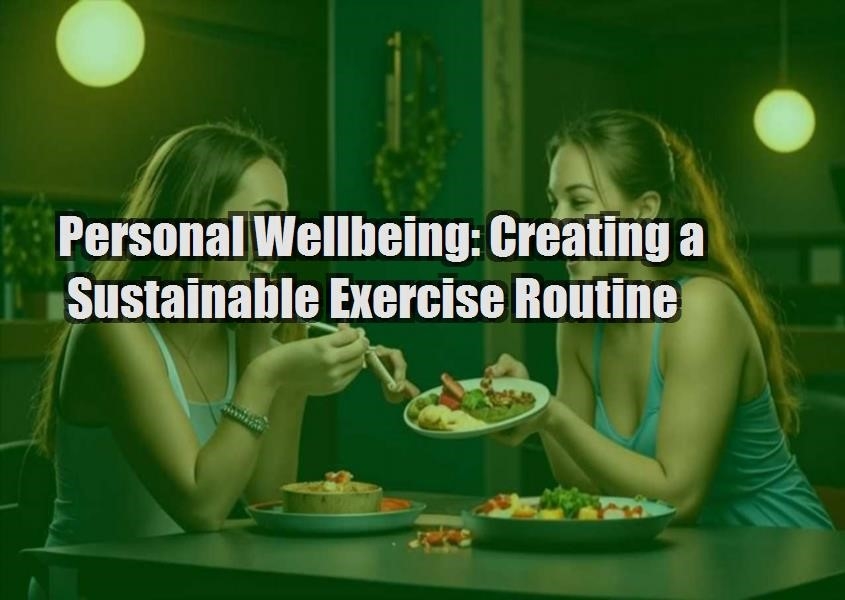In todays fast-paced world, maintaining personal wellbeing has become increasingly important. A key component of wellbeing is physical health, which can be significantly enhanced through a sustainable exercise routine. Developing a routine that you can stick with over the long term is essential for reaping the benefits of regular physical activity. This guide will explore how to create a sustainable exercise routine that fits into your lifestyle, offering tips, strategies, and insights to help you achieve and maintain your fitness goals.
Understanding the Importance of Exercise
Regular exercise is crucial for maintaining overall health and wellbeing. It helps to control weight, improve mental health, boost mood, and reduce the risk of chronic diseases such as heart disease, diabetes, and certain cancers. Additionally, exercise strengthens bones and muscles, improves sleep quality, and enhances cognitive function. Given these benefits, its clear that incorporating physical activity into your daily routine is a valuable investment in your long-term health.
Assessing Your Current Fitness Level
Before you begin designing your exercise routine, its important to assess your current fitness level. This will help you set realistic goals and tailor your routine to your individual needs. Here are a few steps to evaluate your fitness level:
- Consult a healthcare professional: Before starting any new exercise program, especially if you have existing health conditions, its wise to get a check-up.
- Self-assessment: Evaluate your endurance, strength, flexibility, and balance through simple tests such as timed walks, push-ups, sit-and-reach tests, and standing on one leg.
- Set baseline metrics: Record your current weight, body measurements, and any relevant health metrics to track your progress over time.
Setting Realistic and Achievable Goals
Goals are a crucial part of a sustainable exercise routine. They provide direction and motivation, helping you stay committed. Follow the SMART criteria when setting your fitness goals:
- Specific: Clearly define what you want to achieve. For example, I want to run a 5K rather than I want to get fit.
- Measurable: Ensure your goal is quantifiable. For instance, I want to run a 5K in under 30 minutes.
- Achievable: Set realistic goals that are within your reach, considering your current fitness level and lifestyle.
- Relevant: Choose goals that are meaningful and aligned with your personal interests and health needs.
- Time-bound: Set a deadline to create a sense of urgency, such as I want to achieve this goal within three months.
Designing Your Exercise Routine
Creating a well-rounded exercise routine involves incorporating different types of physical activities that target various aspects of fitness. Here are some key components to include:
Cardiovascular Exercise
Cardio workouts improve heart health, increase endurance, and help with weight management. Aim for at least 150 minutes of moderate-intensity or 75 minutes of high-intensity cardio each week. Popular cardio activities include:
- Running or jogging
- Cycling
- Swimming
- Brisk walking
- Dance classes
Strength Training
Strength training builds muscle, increases metabolism, and strengthens bones. Include strength training exercises at least two days per week. Focus on major muscle groups using exercises such as:
- Weight lifting
- Bodyweight exercises (e.g., push-ups, squats, lunges)
- Resistance band exercises
Flexibility and Balance
Flexibility and balance exercises enhance your range of motion, prevent injuries, and improve overall mobility. Incorporate these activities into your routine several times a week:
- Yoga
- Pilates
- Stretching routines
- Balance exercises (e.g., standing on one leg, stability ball exercises)
Making Exercise Enjoyable
One of the keys to a sustainable exercise routine is finding activities that you enjoy. When you look forward to your workouts, youre more likely to stick with them. Here are some tips to make exercise fun:
- Mix it up: Vary your workouts to prevent boredom and challenge different muscle groups.
- Workout with a friend: Exercising with a partner can make the experience more enjoyable and provide accountability.
- Listen to music or podcasts: Create a motivating playlist or listen to engaging podcasts to keep you entertained during workouts.
- Join a class: Group fitness classes can be fun and provide a sense of community.
- Set mini-challenges: Create small, fun challenges for yourself to keep things interesting and motivate you to push harder.
Scheduling and Consistency
Consistency is crucial for developing a sustainable exercise routine. Here are some strategies to help you stay on track:
- Set a regular schedule: Plan your workouts at the same time each day to create a habit.
- Prioritize your workouts: Treat your exercise time as a non-negotiable appointment.
- Be flexible: Life can be unpredictable. If you miss a workout, dont get discouraged. Adjust your schedule and get back on track.
- Track your progress: Keep a workout journal or use a fitness app to log your activities and monitor your progress.
Overcoming Common Challenges
Sticking to an exercise routine can be challenging, but understanding potential obstacles and having strategies to overcome them can help. Here are some common challenges and how to address them:
Time Constraints
If you find it hard to fit exercise into your busy schedule, try these tips:
- Break your workouts into shorter sessions throughout the day.
- Combine exercise with other activities, like walking during phone calls or doing bodyweight exercises while watching TV.
- Wake up a little earlier to fit in a morning workout.
Lack of Motivation
Maintaining motivation can be difficult, but these strategies can help:
- Set specific, short-term goals to keep you focused.
- Reward yourself for reaching milestones.
- Find an exercise buddy to keep you accountable.
- Remind yourself of the benefits of exercise and how good you feel after a workout.
Physical Discomfort or Injury
Exercise should not cause pain. If you experience discomfort or injury, consider these steps:
- Ensure youre using proper form and technique.
- Start slowly and gradually increase intensity.
- Incorporate rest days into your routine to allow your body to recover.
- If you have persistent pain, consult a healthcare professional.
Conclusion
Creating a sustainable exercise routine is an ongoing process that requires patience, commitment, and flexibility. By understanding the importance of exercise, setting realistic goals, designing a balanced routine, and making your workouts enjoyable, you can develop a habit that enhances your personal wellbeing. Remember, consistency is key, and overcoming challenges is part of the journey. Start today, and take the first step towards a healthier, happier you.







